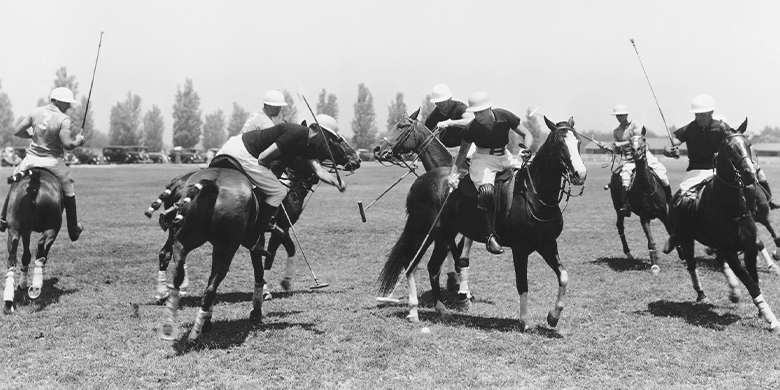
16 August, 2023
The Evolution of Polo Shirts: From Sports to Style Statements
Polo shirts, with their classic collars and comfortable fit, have transcended their sporting roots to become a ubiquitous fashion item worldwide. From polo fields to runways, these versatile garments have undergone a remarkable evolution, transitioning from functional sportswear to coveted style statements. In this blog post, we will embark on a historical journey to explore the captivating evolution of polo shirts and delve into the influential fashion trends that have propelled them into the realm of timeless elegance.
Origins

The history of the polo shirt is deeply intertwined with the sport of polo itself, which traces its origins back to ancient Persia, where it was played as a royal pastime. However, it was in India during the late 19th century that the modern polo shirt began to take shape as we know it today.
During the British colonial era, polo gained significant popularity among the British military officers stationed in India. The sport's combination of equestrian skills, teamwork, and strategy made it a favourite pastime for the officers, who were eager to escape the drudgery of military life whenever possible. However, the traditional attire of the time, with its restrictive and cumbersome clothing, was not conducive to the fast-paced nature of the sport.
As polo matches gained momentum, players sought more practical and comfortable attire that allowed ease of movement while still maintaining a sense of style and professionalism. This need led to the creation of the first polo shirts. These early versions were tailored with long sleeves and a buttoned-down collar to provide both sun protection and a polished appearance on the field.
The fabric chosen was piqué cotton. This unique weave featured raised parallel cords or ribbing, which enhanced the breathability of the garment. The piqué weave allowed air to circulate freely, keeping the players cool during intense matches and preventing excessive sweating.
Rise to Mainstream Fame
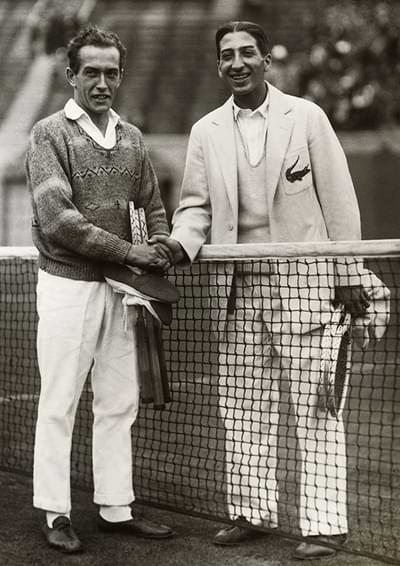
While the original polo shirts served their purpose on the polo fields, the innovation of a renowned tennis player truly transformed the garment and brought it into mainstream fashion. René Lacoste, a French tennis icon, revolutionised the design in the 1920s.
Frustrated with the traditional tennis attire of the era, which typically consisted of long-sleeved button-up shirts and ties, Lacoste sought a more comfortable and practical alternative. Drawing inspiration from the polo shirts worn by polo players in India, he designed a short-sleeved version made from the same breathable piqué cotton.
Lacoste's shirt featured a softer collar, three-button placket, and a slightly looser fit compared to traditional tennis attire. This innovation provided unparalleled comfort and freedom of movement on the tennis court, giving birth to the modern polo shirt.
One of the most enduring aspects of Lacoste's design was the inclusion of a small crocodile logo on the left chest, which became the world's first brand logo to appear on clothing. The idea came from Lacoste's tenacious playing style on the tennis court, earning him the nickname "the Crocodile." The logo, which has become synonymous with the brand, added a touch of distinctive flair to the otherwise simple design.
Lacoste's polo shirts gained popularity among tennis players and athletes, so they quickly transcended their sporting origins to become a fashion statement. Their versatility and understated elegance appealed to a wide audience, and its popularity spread beyond sports, reaching Hollywood stars and fashion-conscious individuals around the world.
Polo Shirts in Pop Culture
During the 1950s and 1960s, the polo shirt became an iconic and influential piece of clothing in pop culture, thanks to the endorsement of Hollywood stars and style icons like James Dean and Steve McQueen. These two decades witnessed a significant shift in fashion and culture, and the polo shirt emerged as a symbol of leisure, athleticism, and effortless elegance.
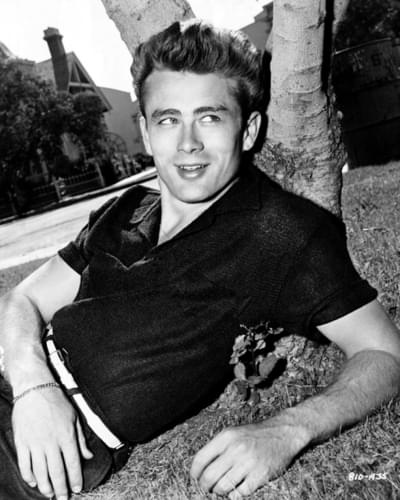
James Dean's impact on popularising the polo shirt cannot be overstated, as his timeless style and rebellious charm left an indelible mark on the fashion world. In the 1950s, Dean emerged as a cultural icon and a symbol of youthful rebellion, and his choice to wear one in the film "Rebel Without a Cause" further solidified his influence on fashion trends.
In "Rebel Without a Cause," James Dean's character, Jim Stark, embodied the disillusioned and misunderstood teenager who challenged societal norms. His wardrobe, including the iconic polo shirt, reflected this sense of defiance and nonconformity. By wearing one as part of his casual yet stylish ensemble, Dean's character defied traditional dress codes and embraced a more laid-back sense of fashion, setting a new standard for cool and effortless style.
The film's impact was immense, resonating with the youth of the time who were experiencing a cultural shift and seeking to distance themselves from the rigid conventions of their parent's generation. The rebellious spirit of the character Jim Stark, mirrored by James Dean's off-screen persona, made this style of shirt a symbol of youthful rebellion and individualism.
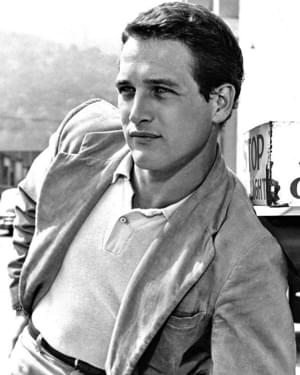
Steve McQueen, As one of the 1960's most influential actors, also had an impact. His portrayal of characters with a unique blend of sophistication and ruggedness left an indelible mark on both cinema and fashion. In the 1968 film "The Thomas Crown Affair," McQueen's character, Thomas Crown, epitomised the suave, wealthy businessman who effortlessly combined high society elegance with a sporty and adventurous spirit.
Throughout the film, McQueen's character was often seen donning polo shirts during leisure activities, further solidifying their status as a fashionable and versatile wardrobe essential. His portrayal of a man who seamlessly integrated classic, tailored pieces with sportswear, including the polo shirt, showcased a new form of sophistication that resonated with audiences worldwide.
Steve McQueen's personal style off-screen also played a significant role in popularising them. He was known for his rugged yet refined look, often seen wearing them in his everyday life. Whether riding motorcycles or attending events, McQueen exuded an aura of effortless cool, making these shirts a go-to piece in his wardrobe.
Its appeal was not limited to the silver screen; it became a common sight in everyday life and various social settings. Its association with sports, particularly tennis and golf, contributed to its reputation as an athletic and leisurewear staple.
One of the key reasons for its enduring popularity during this time was its versatility. It seamlessly transitioned from casual to semi-formal attire, making it suitable for various occasions. Men and women alike embraced this unisex garment, appreciating its comfort, style, and timeless appeal.
Fashion enthusiasts worldwide quickly adopted it as a go-to item in their wardrobes, appreciating its ability to exude an air of effortless elegance while still maintaining a relaxed vibe. The shirt's collared design and short sleeves gave it a refined yet approachable look, making it a favourite choice for both men and women who sought to strike a balance between classic elegance and modernity.
As the 1960s progressed, it continued to be a prevalent and influential fashion item. It became a symbol of the cultural shift towards youth rebellion and individualism, capturing the essence of the era's changing social dynamics. This transformative period in history gave rise to various fashion trends, but the polo shirt stood the test of time
The Preppy Movement
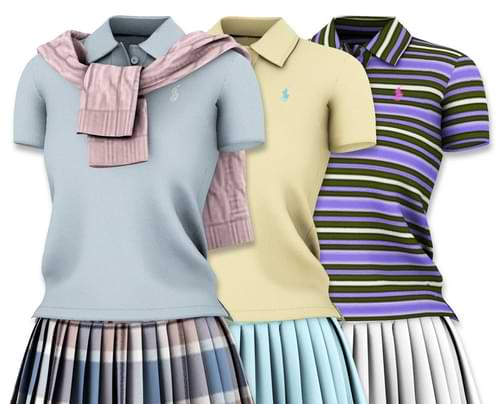
The 1980s marked a significant resurgence of the preppy fashion movement, and the polo shirt played a central role in defining and representing this iconic style. The term "preppy" originally referred to students attending prestigious preparatory schools and universities, where a certain dress code emphasized a clean-cut, conservative, and refined appearance. However, in the 1980s, the preppy style expanded beyond educational institutions and became a mainstream fashion trend embraced by people from all walks of life.
The polo shirt perfectly embodied the preppy lifestyle with its roots in the sporting and leisure activities of the upper class. Its association with elite schools and country clubs made it a symbol of social status and sophistication. Polo players and golfers had been wearing these shirts since the early 20th century, but it was during the 1980s that it truly transcended its sporting origins and became a fashion statement.
One of the key drivers of its popularity during this era was the influence of designers and fashion brands, most notably Ralph Lauren. Ralph Lauren's brand became synonymous with preppy fashion, and their polo shirt collection played a pivotal role in defining the look. The brand offered a diverse array, featuring various colours, patterns, and logos that allowed individuals to express their individuality while adhering to the preppy aesthetic.
Its versatility made it a favourite among both men and women in the 1980s. It could be effortlessly dressed up or down, making it suitable for a range of occasions. Paired with chinos or pleated skirts, accessorised with a ribbon belt or pearls, and topped with a classic cardigan or blazer, it was a staple in the preppy wardrobe. The look was often completed with boat shoes, loafers, or penny loafers, further enhancing the polished and sophisticated vibe.
The popularity of preppy culture extended beyond the United States, with the style becoming a global phenomenon. European fashion houses and designers also embraced the preppy trend, further cementing its place in international fashion circles. It became a symbol of aspiration for those seeking to adopt a refined and well-groomed appearance, regardless of their socioeconomic background.
Beyond the traditional solid colours, the 1980s saw the introduction of various patterns and logos. Stripes, plaids, and even animal motifs adorned these shirts, adding a touch of whimsy and individuality to the preppy style. It became more than just a sporty garment; it became a canvas for personal expression, reflecting the wearer's taste and personality.
Television shows and movies of the 1980s also contributed to popularising the preppy look, showcasing characters donning polo shirts in casual and formal settings. These media representations further fueled the desire to emulate the polished and put-together style.
The 1980s witnessed a significant revival of preppy fashion, and it became an iconic and integral element of this style movement. Its associations with elite educational institutions and country clubs embodied the preppy lifestyle, symbolising sophistication and social status. Thanks to influential designers like Ralph Lauren, its popularity soared, offering individuals a wide range of choices to express their individuality while embracing preppy fashion's timeless and refined aesthetics.
The Modern Polo Shirt
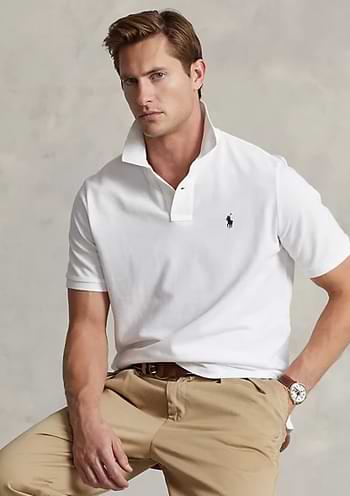
In modern times, the polo shirt has maintained its status as a timeless wardrobe staple while also evolving to adapt to the ever-changing landscape of fashion. Designers and brands have continuously found innovative ways to reinterpret and reinvent the classic polo, making it relevant and appealing to contemporary tastes.
One of the significant developments is the use of a wide range of fabrics. While the traditional cotton pique fabric remains popular, designers have expanded their offerings to include performance fabrics such as polyester blends and moisture-wicking materials. These modern fabrics enhance the shirt's breathability, durability, and stretch, making it more suitable for active and athletic lifestyles.
The fit has also seen variations in modern times. While the classic regular fit is still widely available and loved for its timeless appeal, designers have introduced slim-fit and tailored options, catering to those who prefer a more streamlined and modern silhouette. This allows individuals to choose one that best complements their body shape and personal style.
Embellishments and detailing have become another essential aspect. Designers have experimented with different collar styles, including button-down collars and contrast colour collars, giving the garment a fresh and contemporary look. Additionally, subtle embroidery, contrasting trims, and unique button designs have added a touch of sophistication and individuality.
One of the most significant transformations is the rise of customisation. Technological advances and manufacturing processes have made custom polo shirts widely accessible to individuals, businesses, and organisations. This level of personalisation allows people to create ones that reflect their unique brand identity, personal preferences, or team affiliations.
They are now available in a plethora of colour options, and businesses can have their logos or slogans professionally embroidered or printed on the shirts. This level of personal branding is particularly popular for companies, sports teams, schools, and events, as it helps create a cohesive and recognisable identity.
Beyond just logos, they can feature intricate designs and graphics, making them wearable works of art. The fusion of art and fashion has opened up a new realm of possibilities, allowing designers and consumers to express their creativity and individuality through this versatile garment.
It has also transcended gender norms, becoming a popular unisex fashion item. Both men and women embrace it as a versatile and comfortable option for various occasions, from casual outings to semi-formal events.
The garment's versatility makes it an excellent choice for dressing up or down, depending on the occasion. It can lend a polished and sophisticated look paired with tailored trousers or a skirt. On the other hand, when paired with jeans or shorts, it exudes a relaxed and laid-back vibe.
Conclusion
From its humble beginnings as sportswear for polo players to its current status as a versatile fashion staple, the polo shirt's evolution is a testament to its timeless appeal and adaptability. Rooted in functionality, it has effortlessly transitioned into a symbol of elegance and sophistication across different settings.
As we continue embracing the evolution, we look forward to witnessing new trends and innovations that will keep this iconic garment relevant for generations. Whether on the tennis court, golf course, or in the world of high fashion, the polo shirt remains a style statement that bridges the gap between athleticism and sartorial finesse.
The Polo Shirts Only Team

